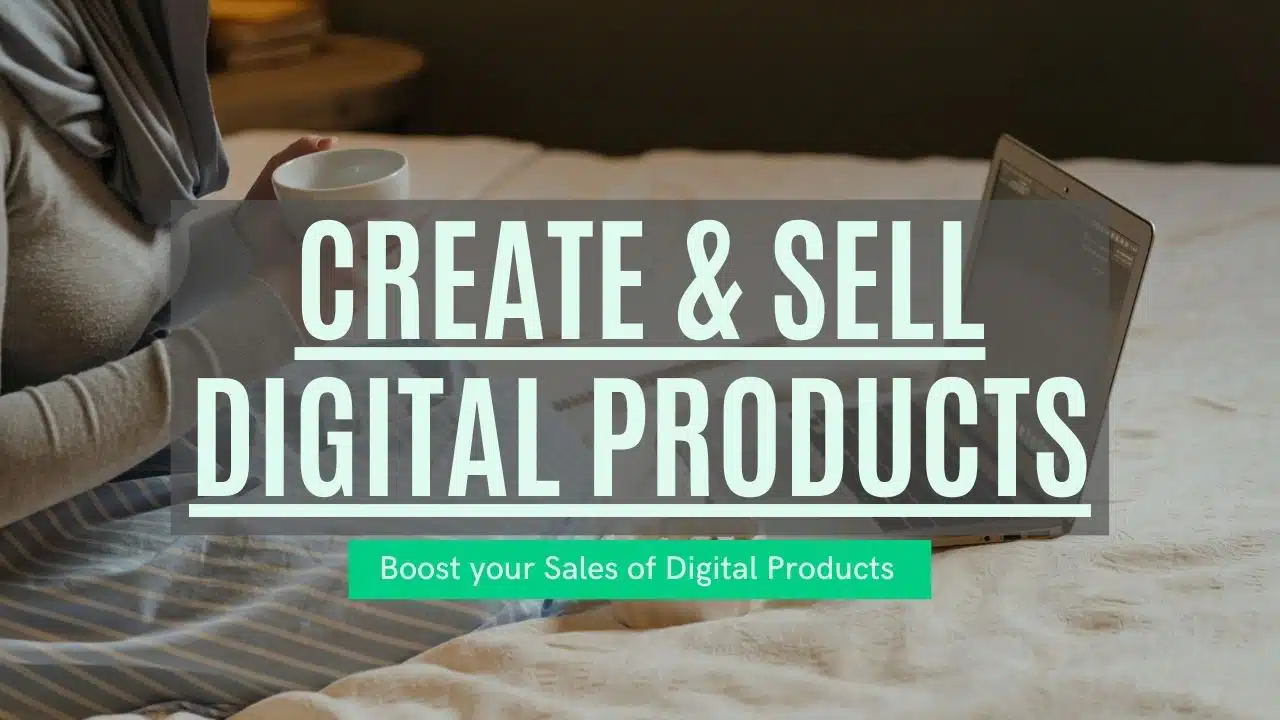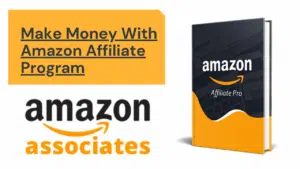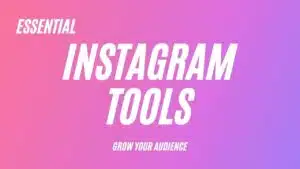Sell Digital Products. Create it once and sell it repeatedly. This is probably one of the main reasons you’re interested in selling digital products.
Today, I’m going to teach you how to validate and create digital products that will actually sell. Then I’m going to give you a list of the best digital products for turning a profit and improving your customers’ lives.
Selling digital products is one of the most accessible businesses for an aspiring entrepreneur. For experienced business owners, digital products are also an amazing way to add on a new revenue stream.
See the beauty of digital products is that they allow you to package knowledge you already have, or skills and services you already perform into a product that you can build once and sell digital products countless times, which allows you to save a lot of time, a lot of overhead and reach a lot more customers.
Now, let me pre-phase this video by saying that to succeed with digital products, you already need to be an expert in what you do, so you can provide customers with genuine value.
There are no shortcuts to creating a successful business and creating a digital product is no exception.
So if you have valuable information that can improve customer’s lives, then let’s get started.
Table of Contents
Why Sell Digital Products?
So first things first. What is so special about digital products? Well, they’re a low investment. They’re more profitable than physical goods because you don’t have to worry about shipping or replenishing inventory. You don’t have to deal with the hassle of constantly producing stock, storing, shipping, or any other logistics.
You can automate the delivery and you can serve your niche at scale, by providing valuable information. Not only that, but the shifted digital business models and online education is a powerful market factor working in your favor. E-learning, for example, is projected to be worth $331 billion by 2025.
Okay. Now let’s talk about how to create a digital product and then later in this blog, I’m going to give you some product ideas.
So the first thing that we need to do when creating a digital product answers a very simple question. What problem can you solve and what opportunity can you provide? See, at the core, there are two main reasons why people purchase a product.
The first is to move further away from pain. And the second is to unlock a benefit. In either case, these people are seeking to improve their lives in a meaningful way. So, what you need to do is create a problem statement, which is a concise description that highlights the gap between the barriers your target market is facing and their desired end state.
The reason why we want to do this is so we clearly articulate what the idea is and why it is useful in the context of the marketplace.
Writing a problem statement is actually quite simple, and it should read more like a paragraph than a sentence.
Start by stating how things should work. Then explain the problem and why it matters. Then explain why the problem is costing money. Lastly, propose a solution and describe its benefits.
Here’s an example of a fictional online course.
Financial literacy is a fundamental life skill that should be taught in schools, but it’s not. As a result, 53% of American adults are financially anxious, and four out of five adults aren’t confident they’ll have enough money saved to retire comfortably.
Not understanding financial principles like budgeting, interest rates, credit debt, and saving causes the average American to lose $1,634 each year. My online course will teach students the basics of financial literacy in just two hours, helping them learn the skills they need to achieve better financial futures.
Do you see how the problem statement helps frame and articulate your digital product idea and why it is valuable in the market?
No matter whether you’re making software, a course, or a digital download, don’t skip this step.
Validate Your Digital Product Idea
Once you’ve outlined what your product is and why it’s valuable, you’ll need to ensure that people will actually be interested in your product.
The biggest risk that any entrepreneur faces is building something no one wants. Here are some popular ways to validate your digital product idea.
The first is keyword research, use a keyword research tool like Google’s keyword planner, or Uber suggests, to give you data about how many people are searching for your digital product idea.
If the related search terms to your product idea are high in search volume, that means there are a significant number of people who are already seeking it out. This is a positive indicator that your idea has a product-market fit.
Secondly, conduct a Google search to see if there are competitors already operating a digital product business in this space. If competing businesses are already making money doing it, well that’s a pretty solid indicator that your product idea is viable.
However, lower competition makes market penetration easier. Next head over to Google Trends and type topics related to your digital product idea into the search bar. Your goal is to see a line graph that is moving upwards, meaning that the interest in your topic is increasing over time, and your potential market size is expanding.
This will also give you really helpful information on where your target market is located, and if interest in this product idea is seasonal. Once you’ve finished looking at trends and keyword research, and you realize that you have a sizable market, you’ll want to speak to actual humans, interviewing potential customers in your target market is a powerful way to unearth insights that can be incremental in building a quality digital product that sells.
Want to know what people don’t like about your competitors offerings? Ask them.
Want to know your target market’s pain points, desires, and where they hang out online? Ask them.
Speaking to potential customers can take a variety of forms, simply contact people who you think might be interested in buying your product via email or through social media, and ask them if they’d be willing to do a virtual interview or fill out a survey.
You can offer them a free version of your finished product when it’s done to thank them and create incentives. While at the same time, giving yourself the opportunity to ask for a testimonial later down the road. When doing this many people make the mistake of reaching out to friends and family. Instead, reach out to strangers who actually represent your target market. You’ll gain much more reliable and useful feedback.
A final way to validate your idea is by creating a simpler version of the product and getting it out to the world as soon as possible, to gain feedback that you’ll use to improve and create a final version of your product.
In the tech world, this is known as a beta launch or a preview, where a product with known or unknown bugs is released to the public or a select group of people for usability testing.
This technique is helpful if your digital product requires a significant amount of effort to create. In the case of an online course, live webinars have often been used as a way to validate product-market fit.
Create Customer Personas
Create some customer personas. Customer personas tell the story of a customer in a few sentences, at the exact moment they hit an urgent problem.
If you’ve conducted the customer research, doing the interviews or surveys like we suggested before you can use what you learned to inform these customer personas.
With customer personas, you want to avoid generalities. Instead, flesh out their problems, and understand why they should care about you, your brand, and your product.
This will help you create a more valuable product. Overcome objections with your copy later on when you start selling your digital products and help you understand what channels you can reach customers on.
Set Up a Landing Page
Landing pages are often the first impression people get of your company and they were a vital component in increasing trust in getting a sale.
Well, some digital product entrepreneurs treat landing pages as an afterthought, they can actually be a strategic way to generate leads before you even launch. And all you need to do is run some paid media to gain some traffic.
Creating a waitlist is a powerful way to build an audience where you are building your product. It allows you to collect emails of people with the problem, and see your product as the solution to that problem.
Collecting emails of leads is incredibly valuable. It can be used for email marketing, retargeting campaigns, and even a build your first look-like audience, and collecting emails and potential customers couldn’t be easier than with Shopify.
The entrepreneurship philosophy we’re talking about here is the opposite of the build it and they will come mentality, which in the context of an already crowded internet marketplace, is a little risky.
Doesn’t it sound wiser to have a pipeline of leads, ready to purchase as soon as your product goes on sale?
Now, when building a landing page, you’ll have three guiding principles.
The first is increased desire by tempting people with value. Second, be specific with your wording, and avoid any vagueness.
And number three is to get to the important points fast, and make your prospect’s life easy by being concise.
Your copy should do these things.
- Outline how your product offers a better solution than other worse alternatives.
- Highlight the problem your target customer is experiencing.
- Pour salt on the wound and highlight how their problem is costing them time, money, health, relationships, or reputation.
- State clearly how your product solves the problem.
- Highlight how the benefits naturally arise from your solution.
Now, I understand that for someone creating a landing page for the first time, it can feel a little bit daunting. Landing pages are the best way to sell digital products.
So as a starting point, follow this structure. At the top, we have a Navbar. That’s pretty self-explanatory.
Then the next section is a Hero. And this is where you explain who the product’s for and why it is so valuable.
Then you’ll have a social proof section and this doesn’t need to be testimonials if you don’t have them yet, it can be things like certifications, publications you’ve been featured on, years of experience, and number of projects completed.
Social media proof or expert endorsements.
The section below that you’ll want to be a call to action. And then below that, you’ll have a section that will outline the features. What do they get from buying this digital product?
And then lastly, we’ll have another call to action.
Use Free Content as a Lead Magnet
Now we want to make our waitlist enticing to our target customers. Other than having an optimized landing page, free content is a great way to give people a reason to sign up for the waitlist. So we’ve already established the beginning creating an audience before you launch your digital products is a great idea.
Well, free content is a really effective way to do that. Free content helps build an audience forge deeper relationships with that audience, build trust, gain consumer insights and help stimulate demand for your product.
Regardless of the format, your content needs to meet this criterion. It needs to be relevant to your clearly defined audience. It needs to provide genuine value. It needs to dovetail with your digital products and it needs to be working to drive profitable action.
Webinars, a newsletter, educational videos, free downloadable templates on ultimate guide blog posts.
Any of these formats can help you gain more traffic and acquire more email addresses.
Not to mention if you create the content yourself, this is an extremely cost-effective way to build a pipeline of leads.
Create Your Digital Product
To sell digital products first you need to create one. Now, the process of actually developing a digital product is highly dependent on the type of digital product you decide to create.
The length of time and difficulty and investment for executing these products and bringing them to market varies widely, here are some of the most popular types of digital products.
First, we have an online course as we spoke about at the beginning of this video, e-learning is a fast-growing industry projected to be worth over $331 billion by 2025. With the increasing normalization of remote work and remote learning, if you’re an expert and have valuable information to share, this could be a great digital product to create.
Now when selling digital products like an online course, the one really key thing to remember is what you’re really selling is the transformation that your student undergoes. You’re selling the curriculum that will help your customers achieve this improved end state.
If you’re a writer and have valuable knowledge to share creating an ebook and a companion audiobook can be highly profitable when executed correctly. Putting your book in both formats allows you to use the same book in markets significantly amplifying your reach without significantly increasing the cost of production.
Then we have templates, and templates provide a significant value to customers, saving them time, and money, and helping them to create a quality asset that is probably traditionally outside of their skillset.
Here are some examples of templates to sell digital products and these are just some of them. There are so many more. We have business templates like accounting, spreadsheets, proposals, resumes, and pitch decks.
Then we have graphic design templates, like motion graphics, product mock-ups UX kits, website templates, poster designs, social media, graphics, weddings, invitations, business cards, product packaging, and so much more.
Next, we have music and sound effects.
Video creators and musicians are always looking for sounds and music to power their projects and creativity.
Then we have stock photography and every website and ad campaign on the planet needs photography.
Then we have preset. Photographers and videographers will pay for presets that make their workflow easier, like luts, which make the process of color correction exponentially faster.
Then we have a membership site. A membership site is a great way to monetize content in a subscription model, creating reoccurring income.
Then we have webinars. Paid webinars are a great way to sell your expertise to multiple people. Simultaneously.
If you’re in a service or consulting business, this is a perfect way. It’s also a great first step to creating an online course.
Of course, we have software, which is one of the most potentially lucrative digital products to sell. If you’re a computer Wiz that can create a program that solves a pain point.
Creating standalone software though can be pretty expensive and labor-intensive. As another option, you can potentially create an app or plugin to add value to already existing software.
For example, creating a Shopify app. Now, one really important thing to remember when creating a digital product is you don’t need to go it alone.
Services like Fiverr and Upwork can help connect you with specialists who can help bring your vision to life.
Set Up Your Online Store
Next, you need to set up your online store to sell digital products and Shopify is easily one of the simplest, fastest, and most effective ways to sell your digital product.
And that’s because not only does it make setting up a beautiful website, easy by offering a variety of free and premium templates, but it also makes processing payments, tracking sales, collecting customer emails, running promotions, and marketing your product incredibly simple.
And good news. You don’t even need to know how to write a single line of code. For those who want to create an online course, you can easily add, I think if an app to your store.
Market Your Product
To begin marketing your product. You need to create a customer acquisition plan. Where is the best place to find customers? Well, there, isn’t exactly a simple answer to this. It’s not a one-size-fits-all.
It’s going to entirely depend on your business. Specifically, it’s going to depend on who your target audience is and how much you can afford to spend to acquire a customer while remaining profitable.
Here are the main things you’ll need to take into account.
- The first is volume. How much of your target audience lives on this channel? Volume is related to scale.
- Then we have targeting, how easy is it to reach your target audience on this channel?
- Next, we have a minimum cost to acquire a customer.
You see each marketing channel from Google ads to Facebook ads to SEO has a unique customer acquisition cost.
And you need to make sure that your unit economics makes sense so that you retain a healthy profit margin.
This means you’re spending less on marketing than you’re making back in profit.
Two incredibly important factors you need to know to sell Digital Products.
- The first is customer acquisition cost, which is the expense you spend to acquire a customer.
- The next is customer lifetime value, which is the expected profit you’ll make from your customer over time.
We’re going to put together a worksheet with the formulas for calculating customer acquisition costs and customer lifetime value, Some of the most popular customer acquisition channels for digital products are referrals and affiliate links, Facebook ads, Instagram ads, YouTube ads, and content marketing, and SEO. And of course Google ads.
Use Feedbacks
Now, one of the really beautiful things about creating digital products is that iterating and improving your product over time is significantly easier than with physical products. Since you don’t have to deal with inventory or logistics.
By gaining feedback from your customers, you can add on features to your digital products to increase their value over time.
Use Testimonials
Now, one thing you also really need to prioritize is acquiring and promoting your customer testimonials.
Testimonials are vital to creating a sustainable growth engine. And helping build trust.
Once you made some initial sales, testimonials should become a prominent part of your landing page and ad copy.
Conclusion
Now comes the most important part. Turning your plan into action. I hope this blog gave you some serious value and that you’re confident in the next steps you need to take to start your digital product business. Sell Digital Products.




Loved these tips
Thank you soooo much!!! It was the info that I really needed ❤️